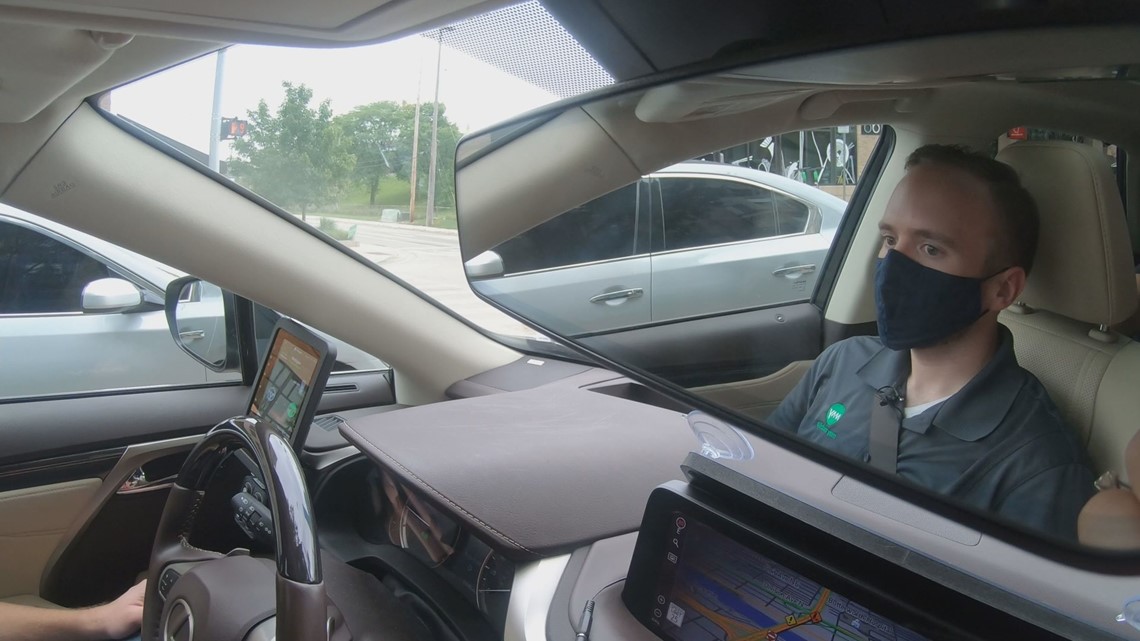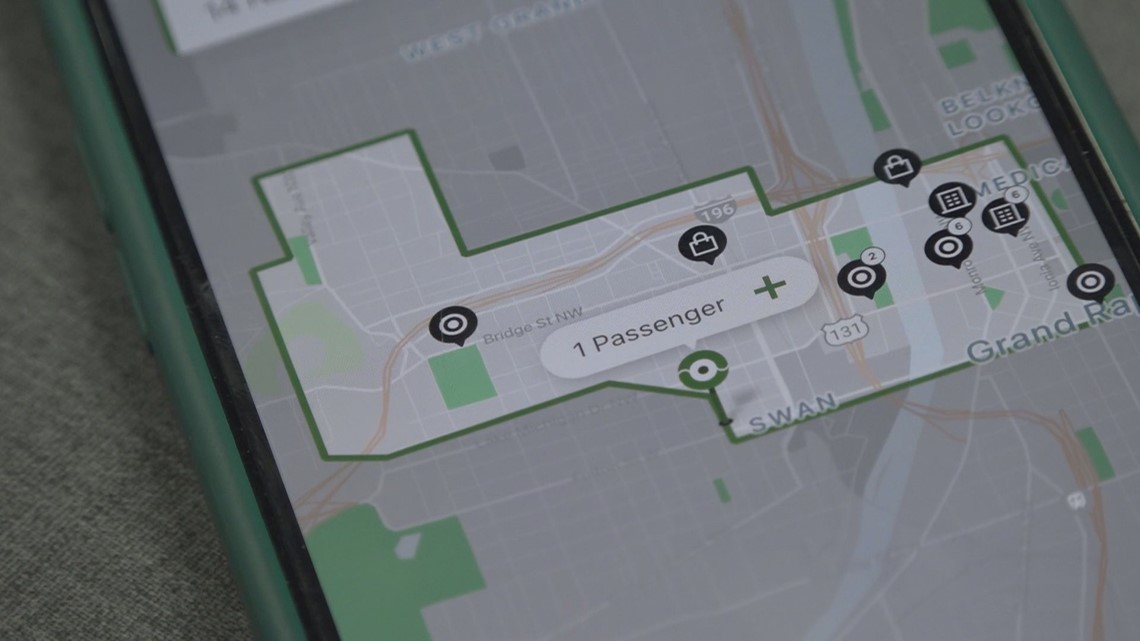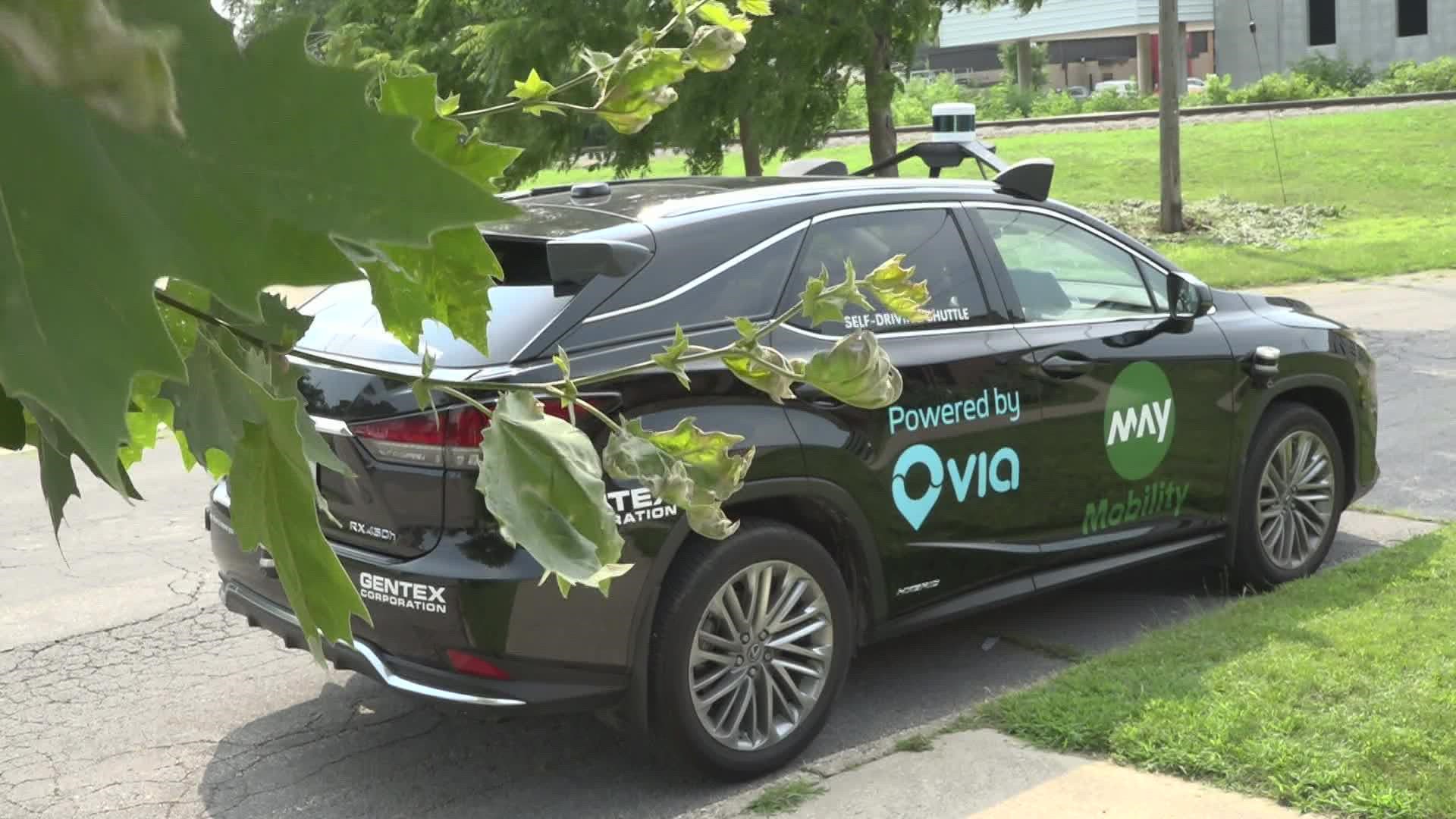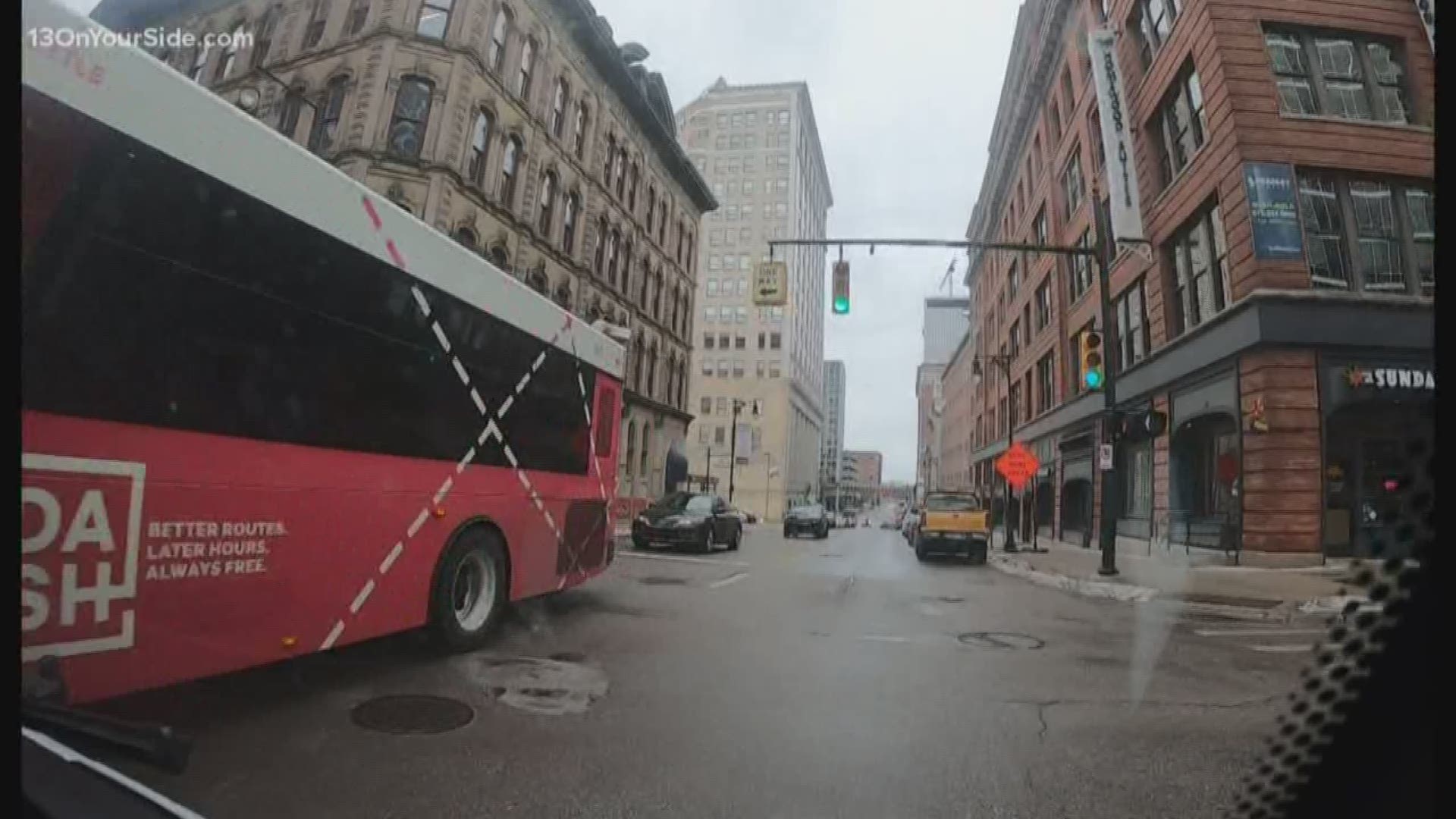GRAND RAPIDS, Mich — May Mobility has brought a new autonomous shuttle to West Michigan, in partnership with the City of Grand Rapids. There are four Lexus SUVs, transformed to drive for themselves.
This is phase two of the Grand Rapids Autonomous Vehicle Initiative (AVGR). Phase one was an electric bus-like shuttle. According to a supervisor with May Mobility, Lacey Heiss, phase one exceeded expectations on ridership. There were more than 80,000 rides in the city.
Phase two is all about on-demand service. The SUV shuttles will be accessible with the May Mobility app. More than 20 drop off locations are situated in the ridership zone, mostly on the west side of the city and downtown.
The shuttles are free to use, and run Monday through Friday from 7 a.m. to 7 p.m. It is currently up and running, and the program is contracted for one year.


Not only does the program advance autonomous vehicle technology, it also serves to improve equitable access to mobility.
"The goal is to get us into the city, where people have to travel a good 10 to 20 minutes before they can reach free or otherwise more affordable transportation," said Heiss. "People in these neighborhoods often feel very forgotten. People want to be able to step outside their door and access public transportation. And where those may used to be an option, are no longer an option. That is our hope."
The City of Grand Rapids worked with May Mobility to create the AVGR zone.
The SUVs do still have an operator in the driver seat, ready to take over when judgment calls need to be made or in inclement weather.
"If you know anything about autonomous vehicles," said Jared Miles, field engineering manager for May Mobility, "it’s going to be a little bit of time until they’re ready to truly supplant human beings as drivers."
However, Miles said the vehicle works similarly to how humans process driving. There are hundreds of lasers on the top of the vehicle in a sensor, spinning around and sending out pulses. Those pulses are measured by how long they take to return, judging other item's distance. There is also cameras that give the vehicle a 360-degree view.


"At the end of the day, it’s choosing from a bunch of very simple things it can do: Accelerate, slow down, brake, veer to one side of the road or the other, am I going to yield to this pedestrian," said Miles. "It’s taking those simple building blocks and building complicated behaviors out of it."
Three people is the maximum in one vehicle at this time. Masks are required. At the end of the day, the vehicles are fogged with sanitizer, and UV light cleans the vehicle in between rides.
There is also one wheelchair-accessible vehicle in the fleet.
RELATED VIDEO: How are Grand Rapids' driverless cars progressing?
►Make it easy to keep up to date with more stories like this. Download the 13 ON YOUR SIDE app now.
Have a news tip? Email news@13onyourside.com, visit our Facebook page or Twitter. Subscribe to our YouTube channel.


